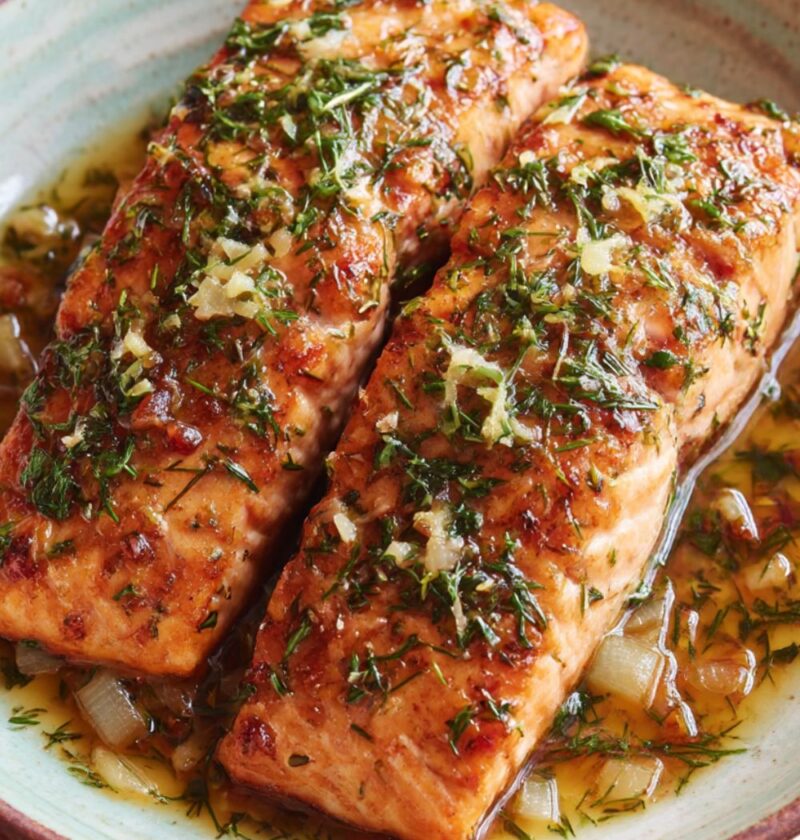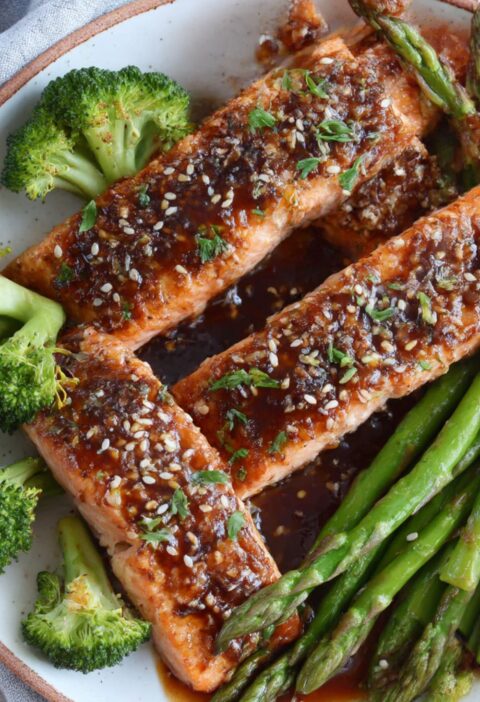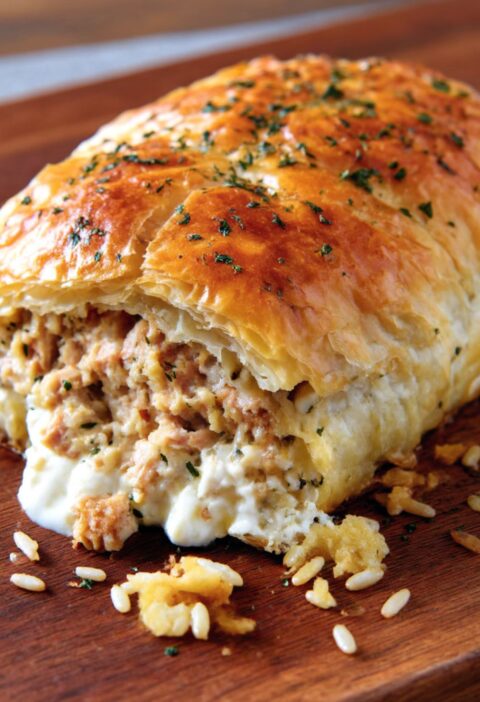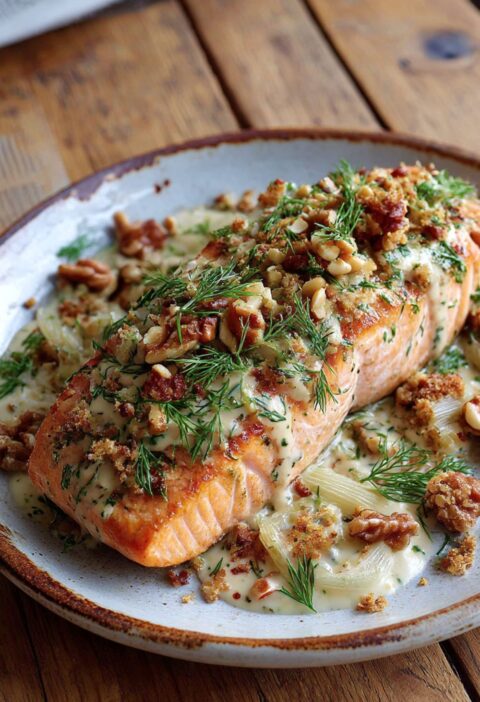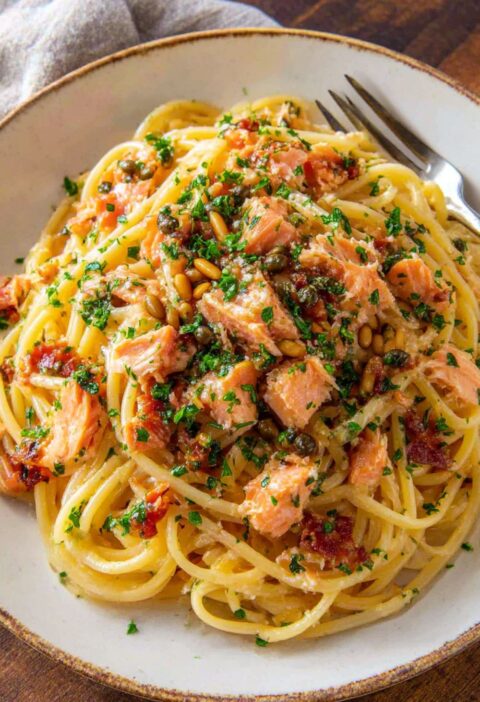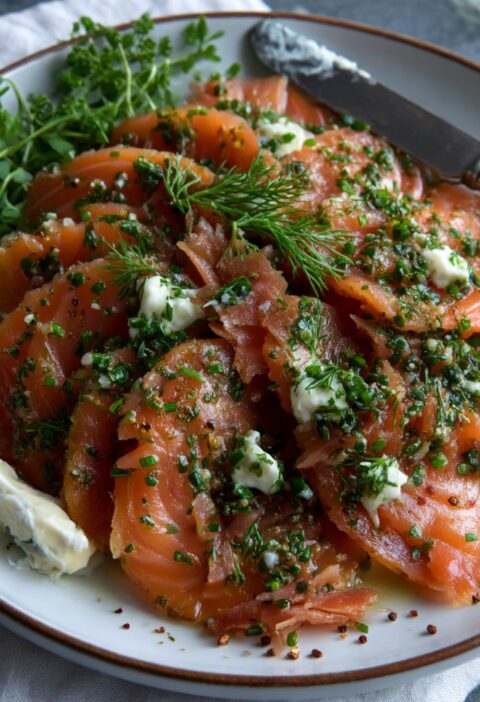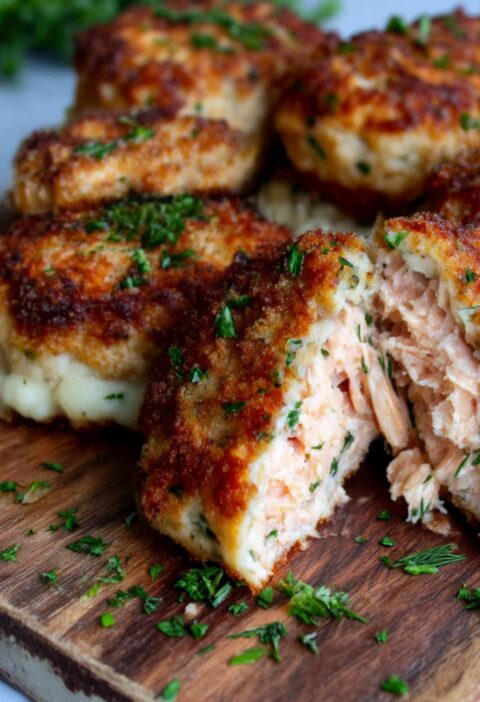This Mary Berry Salmon with Lemon Sauce is a quick and elegant recipe, which is made with fresh salmon fillets and a simple, creamy lemon and dill sauce. It’s the perfect weeknight dinner, a restaurant-quality dish ready in about 20 minutes.
Mary Berry Salmon with Lemon Sauce Ingredients
A classic combination for a light, fresh, and impressive meal.
- 2 skin-on salmon fillets, about 150g (5oz) each
- 1 tablespoon olive oil
- 25g (1oz) butter
- 1 small shallot or ½ small onion, very finely chopped
- 50ml (2fl oz) dry white wine or vermouth
- 150ml (¼ pint) double cream
- 1 tablespoon fresh dill, finely chopped
- Grated zest and juice of ½ lemon
- Salt and freshly ground black pepper
How To Make Mary Berry Salmon with Lemon Sauce
A step-by-step guide to this wonderfully quick and elegant dish.
- Prep the Salmon: Pat the salmon fillets completely dry with a paper towel, especially the skin. This is crucial for getting it crispy. Season the flesh side with salt and freshly ground black pepper.
- Pan-Fry the Salmon: Heat the olive oil in a non-stick frying pan over a medium-high heat. Place the salmon fillets in the pan skin-side down. Press down firmly on each fillet with a fish slice or spatula for about 30 seconds to ensure the entire skin is in contact with the pan. Cook for 4-5 minutes, until you can see the skin is golden and very crisp.
- Finish Cooking and Rest: Flip the salmon fillets over and cook on the flesh side for another 1-2 minutes, until just cooked through. Remove the salmon to a warm plate and set aside to rest while you make the sauce.
- Make the Le
- mon Sauce: In the same pan, melt the butter over a medium heat. Add the finely chopped shallot and cook gently for about 2 minutes until softened but not browned. Pour in the white wine, increase the heat, and let it bubble and reduce by half.
- Finish the Sauce and Serve: Stir in the double cream, chopped dill, and the lemon zest and juice. Let it bubble for a minute until the sauce has thickened slightly. Return any resting juices from the salmon plate to the sauce, then taste and season with salt and pepper if needed.
- Serve: Place a salmon fillet on each plate and spoon the creamy lemon sauce over the top.
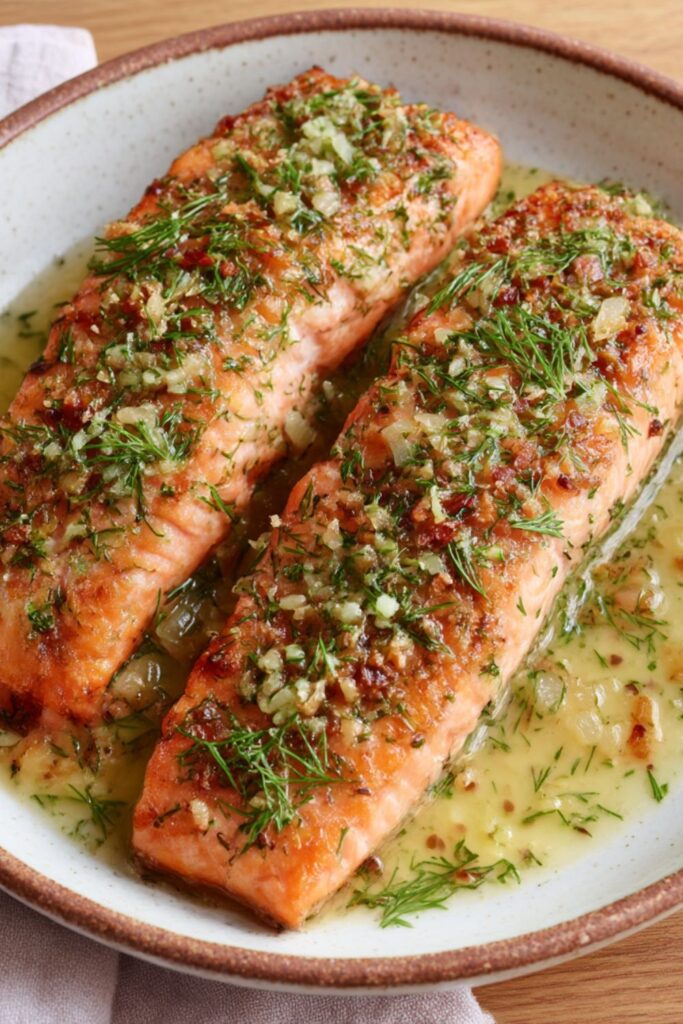
Recipe Tips
For a perfect, restaurant-quality salmon dinner every time.
- How to get perfectly crispy salmon skin? The three secrets are: a very dry skin, a hot pan, and pressing the fillet down firmly when you first place it in the pan. This prevents the skin from buckling and ensures it becomes uniformly golden and crisp.
- How do I know when the salmon is cooked? The best way to check is to look at the side of the fillet. You can see the color change as it cooks up from the bottom. It’s perfectly cooked when it’s just opaque all the way through but still incredibly moist. Be careful not to overcook it.
- Can I make this sauce ahead of time? This sauce is at its best when made fresh in the same pan used to cook the salmon, as it incorporates all the flavorful browned bits. The whole dish comes together so quickly that making it ahead isn’t necessary.
- Can I make this non-alcoholic? Yes. If you prefer not to use wine, you can substitute it with an equal amount of chicken or vegetable stock. The final sauce will be slightly less tangy but still delicious.
What To Serve With Salmon with Lemon Sauce
Classic sides to complete this elegant meal.
This light and flavorful dish is a wonderful centerpiece for a quick weeknight dinner or a special occasion. It pairs beautifully with:
- Buttered new potatoes with fresh parsley
- Simple steamed green vegetables, like asparagus, green beans, or tenderstem broccoli
- A simple green salad with a light vinaigrette
- Fluffy white or wild rice
How To Store Salmon with Lemon Sauce
Keeping your delicious leftovers fresh.
- Refrigerate: Once completely cooled, store the salmon and the sauce in a separate airtight container in the refrigerator for up to 2 days.
- Reheat: To serve leftovers, it’s best to gently flake the cold salmon into the sauce and reheat everything together slowly in a saucepan over a low heat until just warmed through. Be careful not to let it boil.
Mary Berry Salmon with Lemon Sauce Nutrition Facts
An estimated guide per serving.
- Calories: 650 kcal
- Carbohydrates: 5 g
- Protein: 35 g
- Fat: 55 g
Nutrition information is estimated and may vary based on ingredients and cooking methods used.
FAQs
Yes. While dill is the classic herb pairing with salmon, finely chopped fresh parsley, chives, or tarragon would also be delicious in the lemon cream sauce.
You can, but you will miss out on the wonderful texture of the crispy skin. If using skinless fillets, just pan-fry them for about 2-3 minutes on each side until cooked through.
If your sauce is thinner than you’d like, you can let it bubble on the heat for another minute or two to allow it to reduce and thicken naturally.
Try More Recipes:
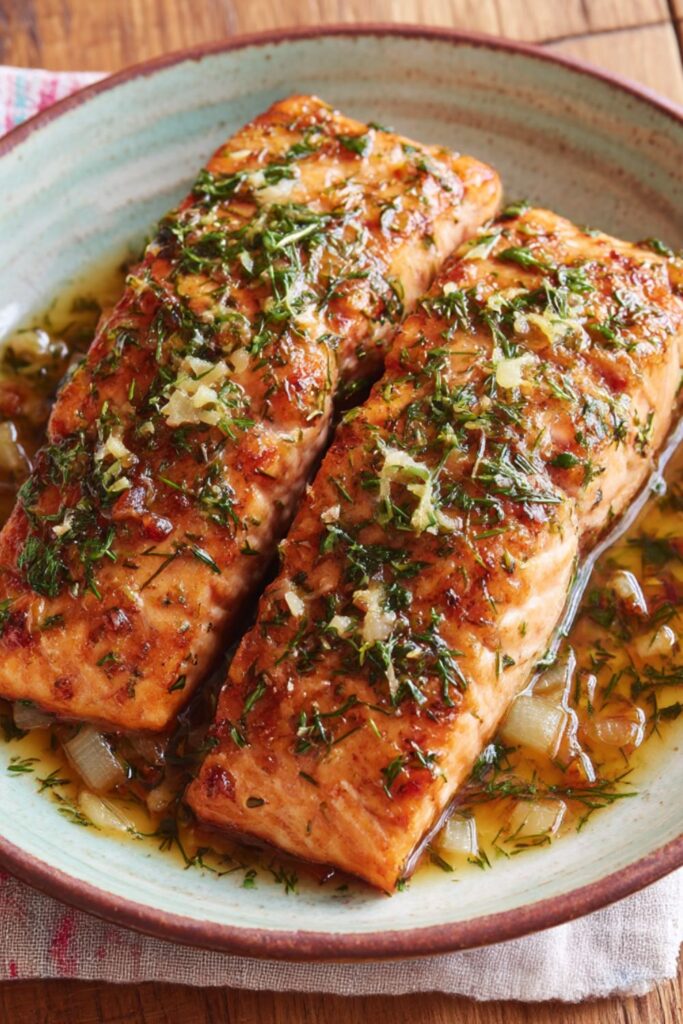
Mary Berry Salmon with Lemon Sauce Recipe
Description
A quick, easy, and elegant dish from Mary Berry, featuring a perfectly pan-fried salmon fillet with crispy skin, served with a rich and creamy lemon, dill, and white wine pan sauce.
Ingredients
Instructions
- Pat the salmon skin completely dry and season the flesh with salt and pepper.
- Heat the olive oil in a hot non-stick pan. Place the salmon in the pan skin-side down and press firmly with a spatula for 30 seconds. Cook for 4-5 minutes until the skin is very crisp.
- Flip the salmon and cook for another 1-2 minutes on the other side. Remove to a plate and let it rest.
- In the same pan, melt the butter and gently cook the shallot for 2 minutes until soft.
- Pour in the wine and let it bubble and reduce by half.
- Stir in the double cream, dill, and lemon zest and juice. Simmer for 1 minute to thicken.
- Pour any resting juices from the salmon plate into the sauce, then season to taste.
- Serve the salmon fillets topped with the creamy lemon sauce.
Notes
- A very dry skin and a hot pan are the secrets to perfectly crispy salmon skin.
- Making the sauce in the same pan you cooked the fish in incorporates all the delicious, flavorful bits left behind.
- This is a very quick dish, so have all your ingredients prepped and ready to go before you start cooking.
- Don’t overcook the salmon; it’s perfect when it’s just opaque and flakes easily.
